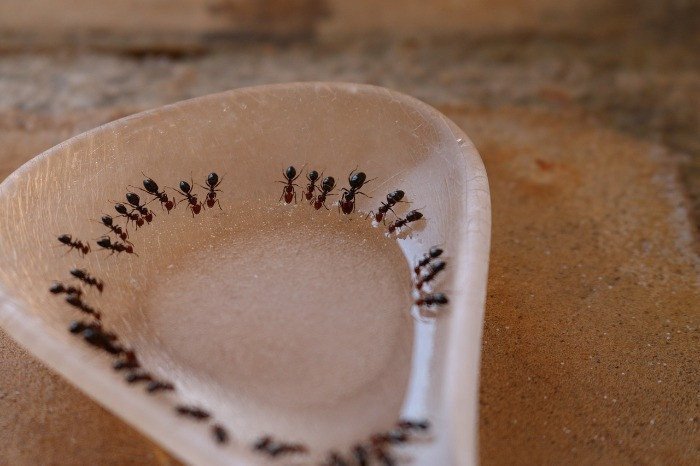24/7 Live Customer Service
CALL OR TEXT (225) 261-4198

Blog Post
Pest Spotlight: Sugar Ants, The Not-so-Sweet Houseguests

Thirsty for the tiniest drops of syrup and hungry for the smallest granules of sugar, this type of ant has a serious sweet tooth. These types of ants have amazing odor-sensing abilities, able to suss out even the smallest amounts of sugary foods left loose in a home. Small in size but large in numbers, they’ll quickly take up residence wherever there are bits of their favorite foods scattered about. If you think you might have a budding ant infestation, it’s best to call an ant extermination company nearby to evaluate your situation.
What are “Sugar Ants?”
Different types of ants have different food preferences. There are some ants that will eat anything, while others are particular fans of certain kinds of foods like sweets or proteins. In North America, “sugar ant” is a general term for any kind of sweet-seeking ant. There is an actual named species of sugar ant, though these are found mostly in Australia. American sugar ants simply have their food of choice as a commonality. Although not typically dangerous, sugar ants can track pathogens into a house unless handled by a local ant removal service.
Types of Sugar Ants
Since the term “sugar ant” includes so many different species of ants, the knowledgeable folks at Bayou Cajun have put together a short list of a few of the most common kinds of ants that fall under the above category:
Indoor Sugar Ants
- pharaoh ants
- pavement ants
- carpenter ants
- odorous house ants
- Argentine ants
Outdoor Sugar Ants
- rover ants
- acrobat ants
- little black ants
- cornfield ants
- false honey ants
What Attracts Sugar Ants?
We’re sure that you can guess what causes a sugar ant infestation: it’s sugar. Surprise, right? Since sugar can be found in most modern packaged foods and in several natural sweeteners, it’s a common attractant that’s never been more prevalent in the pantries of America. Ants like simple/refined sugars the best. These include syrups, white sugar, honey, jams, jellies, cake, soft drinks, and preserves. Sugar ants can also be attracted to the nectar found on some living houseplants. A reputable ant removal company nearby will be able to tell just what’s drawing sugar ants into your home or yard if you’re otherwise careful about cleaning up after yourself. Don’t worry; sometimes it just takes a professional eye to spot the root of an ant infestation.
How Do Sugar Ants Enter a Home?
Many sugar ants are indoor-centric ants, as listed above. They’ll set up shop in cracks and crevices or even underneath manufactured homes and raid pantries for their prizes. Thanks to their small size, it’s easy for them to infiltrate just about anywhere. The key to keeping them out isn’t to seal your home up like a drum but to eliminate what’s drawing them to your house in the first place. Colonies that have established themselves around can be removed concurrently.
Outdoor Sugar Ant Control
Everyone wants to be able to enjoy their yard in peace, especially during the wonderful days of spring and summer. However, ants can really ruin a picnic quickly, and they’ll swarm over just about anything to get their sugar fix. The only way to remove outdoor sugar ant colonies reliably is to contact a top-rated ant control service like Bayou Cajun to handle the job. Then you can be sure that the pie you bake for your next picnic won’t be carried away!
The Best Ant Removal Services Around
Bayou Cajun prides itself on being able to tackle any ant infestation, big or small. If you’re having trouble with sugar ants, reach out to the ant removal pros via phone or email here to schedule an inspection of your home and yard today!